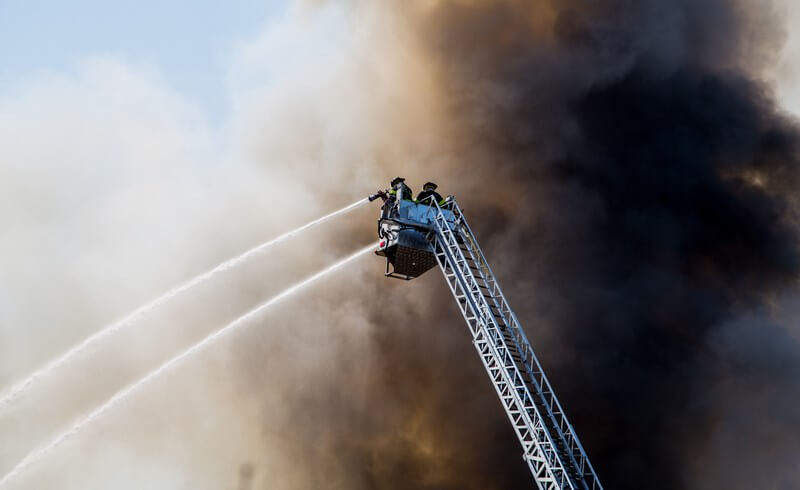
Is your business prepared or is it the next disaster?
You’re a busy midsize or small business owner, maybe even a sole proprietor. Due to this, you wear multiple hats to keep your business running. It’s not unusual for you to work long hours, on weekends and holidays. For you, there’s never enough time in a day. However, you enjoy what you do and like being your boss. When it comes to disaster planning, you think you do not have time to create one or will wing it. If you do not have a plan, you will likely become a crisis victim.
Most small business owners think this way. If you have even heard of business continuity, your perception is likely that it’s a tool for big companies or that it takes too much time or resources. In short, business continuity is the plan you create to respond and recover critical operations after a disaster or outage. The Institute for Business and Home Safety says that 25% of businesses do not reopen after emergencies. Federal Emergency Management Agency stats indicate that 40-60% of smaller companies that close their doors after a disaster don’t open back up again.
With these sobering facts, do you want to take the chance of being sidelined by a crisis? I’m here to tell you why it is well worth the time and investment. It will likely ensure your business’ survival after an emergency happens. At the very least, it will help you to get back to work more effectively and quickly than without it. Most importantly, you won’t be a disaster casualty.

What a business interruption is
It seems like every day there is a new crisis on the news, ranging from natural disasters to criminal incidents. So, let’s level-set first. What we are talking about is a business interruption, a situation which shuts down operations for some time. A crisis of this type is an event where you cannot work at all, or aspects of your business activity are severely limited.
We are leaving the emergency response and clean-up to the police, fire, hospitals, local governments, FEMA – you get the idea. Your goal is to take care of your business and not be a disaster casualty. Any interruption, even if for a relatively short period, could cost you dollars and the ability to service customers. Top risks to most mid-size to small companies that cause business interruptions are a natural disaster, fire, security breach, power outage, crime, or data break/cyber-attacks.

Types of impacts to a business from a disaster
Having described significant events that could precipitate a crisis event, the next thing that you want to think about in continuity planning is what the outcome of the disaster is. In most circumstances, it doesn’t even matter from a planning perspective, precisely what has happened but how prepared you are to respond to it.
Here are the most significant risk impact categories, regardless of the genesis of the crisis:
- Worksite – This is an impact on your office or retail space that damages or impedes access. If you are a virtual business owner, then substitute power outage or network loss here.
- Personnel – Encompasses any high-impact event that removes your staff from being able to work. A classic example is an infectious disease event like a pandemic flu event.
- Network or critical application access – Is any event that disrupts access to your technological tools.
- Third-party or supplier – Is any event that interrupts key vendors or suppliers from supporting your operation and providing contracted services.

Business Continuity Plan considerations
In the last section, I outlined the loss of significant operations components that could stop your business from operating normally. Next, I will guide you through the critical items to consider that will have the most impact on your company. If not addressed, your business is likely to become a disaster casualty.
- Risks: The first thing you should do is assess the top risks that could force your business to shut down or suspend operations. Would it be not having access to your office, staff, technology, tools, or other vital resources or vendors?
- Power Outage: The next major thing for businesses to understand is what your power resumption needs are. If the power gets shut off, how long can you run your business without it? Do you have any planning in place to use alternative power sources? I remember hearing about an ice storm in the western part of my state that closed gas stations for miles around because they had no electricity to run the pumps and had no alternative power source (like a generator).
- Finances: Calculate how long you can survive without cash flow; what insurance coverage you have and understand how SBA loans or FEMA resources can help you. Most business owners fail to plan for expense commitments, like payroll and vendor bills, and most fail to prepare for long-term outages.

Key Business Continuity Plan components
There is no one way to organize a continuity plan. Next, I will outline critical components you should make sure your plan does include. Then, I will leave you with a shortlist of resources to help you with the planning process and keep your business from becoming a disaster casualty.
- Communication process: Understand how you will communicate with business partners, personnel, and customers post-event. Document key contact information. Determine who you will need to contact and critical reasons for doing so. Outline what redundancies you have in place, create an easily accessible essential contact list, and know what your gaps are (and fix them!)
- Response actions: Make a list of what your immediate priorities and steps are in emergencies like after natural disasters, crimes, fires, or power outages. Be mindful of other events that could result in a significant injury to you, personnel, or customers. Work out how to contain the damage caused by the crisis and how you could minimize both the short-term and long-term impacts. Then develop an outline of what you will ask your employees to do in an emergency and train them on it.
- Recovery process: Once you map the action plan, you want to understand the steps to take after the emergency has passed and how you will resume operations. Many fail to consider that this can take much longer than the management of the crisis. I suggest developing action lists of the steps to take to resume business processes after the loss of all or parts of your companies’ workspace, personnel, network, critical equipment, vendors, and communications.

Final thoughts and ROI
Engaging in this effort will indeed take some time. Still, the return on investment (ROI) can be the difference between maintaining your business or catastrophic failure that causes you to shut your doors forever. At the very least, having a continuity plan helps you to layout your emergency response, and the recovery process organizes the information you need in one place and enables you to get back to work faster. That is something both you and your customers will appreciate.
Once you have the plan created, review it at least once a year. It will pay off to determine how you would react to new and emerging risks, align to updated business practices, then refresh the plan overall. It is a good idea to review it when a significant change happens, too (ex. personnel comes/goes, or you add/drop a third-party supplier).
Think of your continuity plan as a living document, like your business plan, which needs to keep current with an ever-changing marketplace. Like business, disaster risks can change over time, and the business continuity process works best if your planning is kept up-to-date and at-the-ready for when you need to use it. So, don’t be a disaster casualty — make that plan!
If you want to learn more about why planning for smaller businesses is so important, check out my recent blog: Top 10 Scary Statistics For Small Business Disaster Planning.

Disaster Planning resources
Here is a quick list of tools I found on-line that can to help you build a continuity plan and prepare for disasters:
- FEMA has a simple Word template that you can use to get started.
- Institute for Business & Home Safety (IBHS) offers this guide to help you walk through the right preparedness steps.
- The American Red Cross offers a program to help you assess your disaster readiness called Ready RatingTM
